Introduction
In a world full of noise, to-do lists, and never-ending responsibilities, finding a place where your mind can rest is no longer a luxury—it’s a necessity. For modern women striving to balance ambition with inner peace, creating a personal meditation space outdoors can be one of the most transformative self-care decisions you’ll ever make. This isn’t just about design; it’s about curating a space that nurtures your mental clarity, energy, and soul.
In this guide, you’ll learn how to transform a slice of your backyard into a tranquil haven perfect for meditation, yoga, or simply sitting in silence. Whether you have a lush garden or a small patio, these tips will help you create a serene retreat tailored to your personal needs.

1. Why Create an Outdoor Meditation Space?
Nature has a calming effect on the nervous system. Studies show that spending time outdoors can reduce stress, lower blood pressure, and elevate your mood. An outdoor meditation space brings all the benefits of mindfulness together with the healing power of nature.
Creating a dedicated sanctuary also supports consistency. When you have a space solely designed for relaxation and reflection, you’re more likely to make time for it in your daily routine.
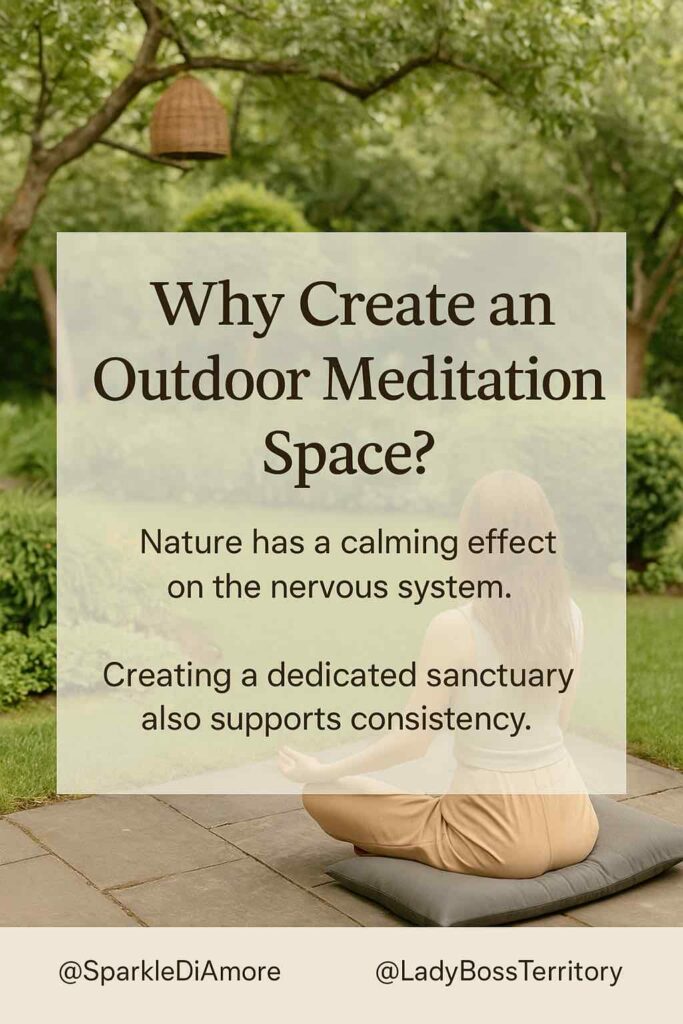
2. Choosing the Right Location
The first step is identifying a peaceful spot. Look for an area that offers privacy, natural beauty, and minimal distractions.
Consider:
- Sound: Avoid high-traffic zones. Listen for wind, birdsong, or a nearby water feature.
- Light: Mornings are ideal, so aim for eastern exposure. Filtered light through trees creates a gentle ambiance.
- Privacy: Fencing, trellises, or tall plants can create a sense of seclusion without building walls.
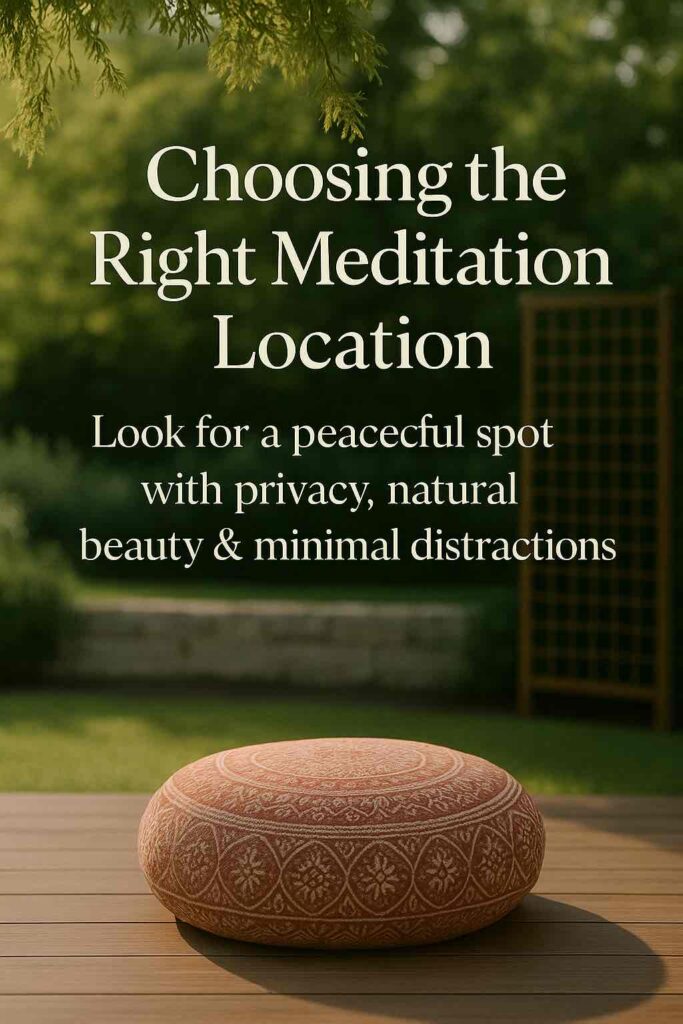
3. Grounding Your Space: The Base Layer
Your space needs a foundation. It can be as simple or elaborate as you want:
- Grass or earth: Perfect for grounding and barefoot meditation.
- Deck or patio: Add a natural fiber rug for warmth.
- Gravel or stepping stones: Creates structure while maintaining a natural feel.
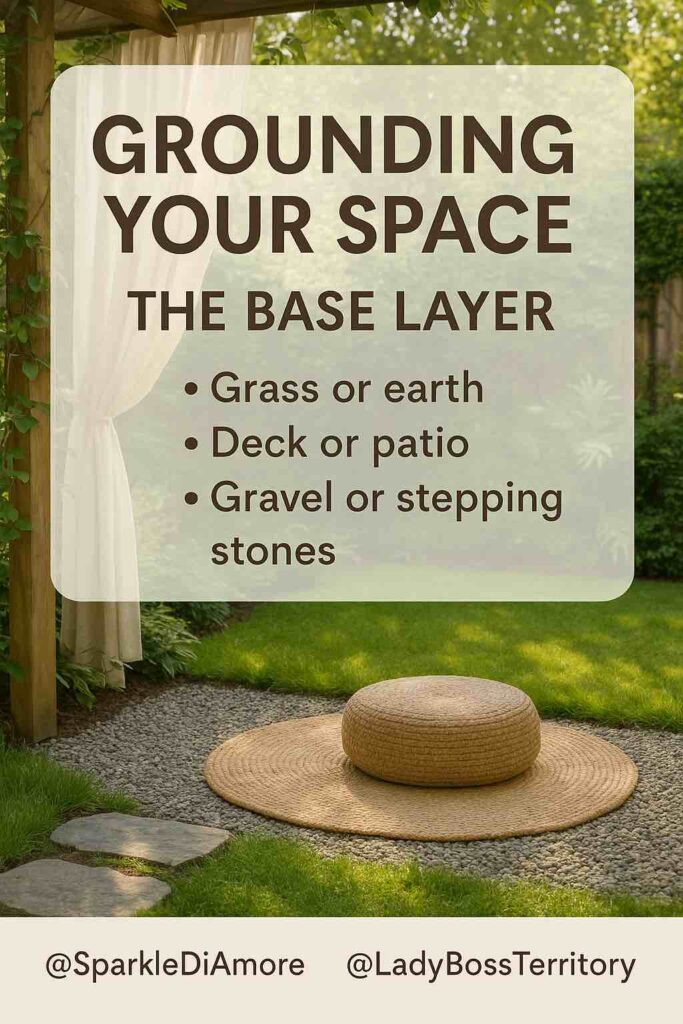
4. Comfortable Seating & Posture Support
Comfort is essential for stillness. You can opt for:
- A waterproof meditation cushion (zafu)
- A yoga mat with a bolster
- A hanging chair or hammock for gentle sway
The key is to support your back and hips so your body isn’t a distraction.

5. Natural Elements to Promote Calm
Nature provides everything you need to foster tranquility. Integrate natural elements to enhance the experience:
- Plants: Lavender, jasmine, bamboo, and ferns all promote calm.
- Water Features: A small fountain or birdbath brings soothing sound.
- Wood Accents: Use reclaimed wood benches or driftwood for grounding energy.
- Stones: Add river rocks or crystals for a tactile, earthy presence.
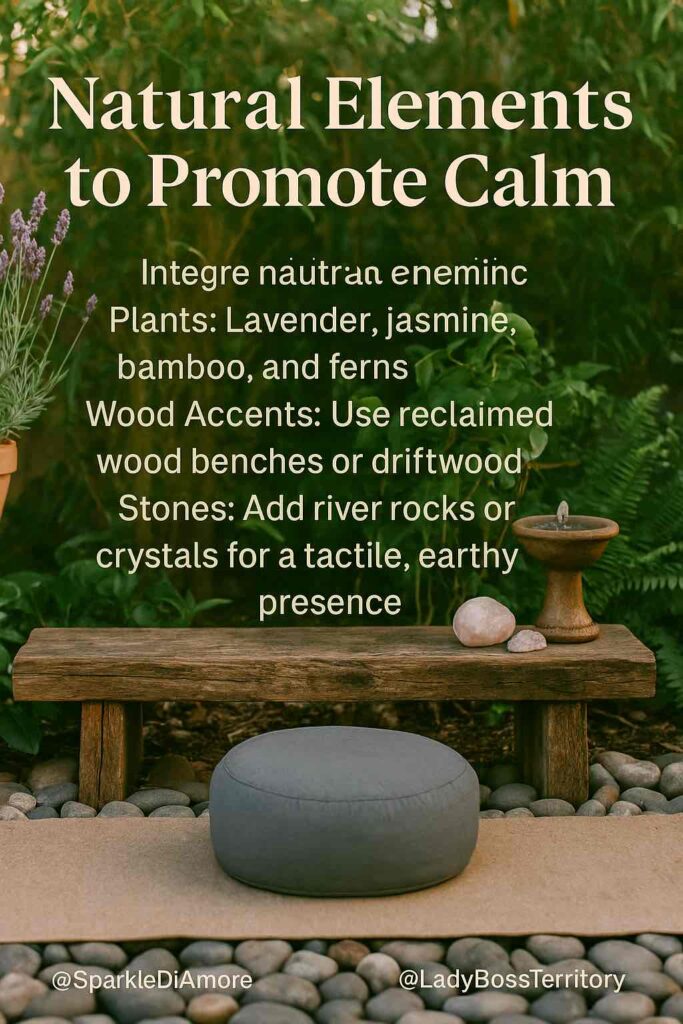
6. Create Shade & Shelter
Meditating in direct sun can be uncomfortable. Options include:
- Fabric canopies or outdoor curtains
- Bamboo umbrellas
- Shade sails or trellises with climbing vines
Bonus: These elements also create a cozy, enclosed vibe.
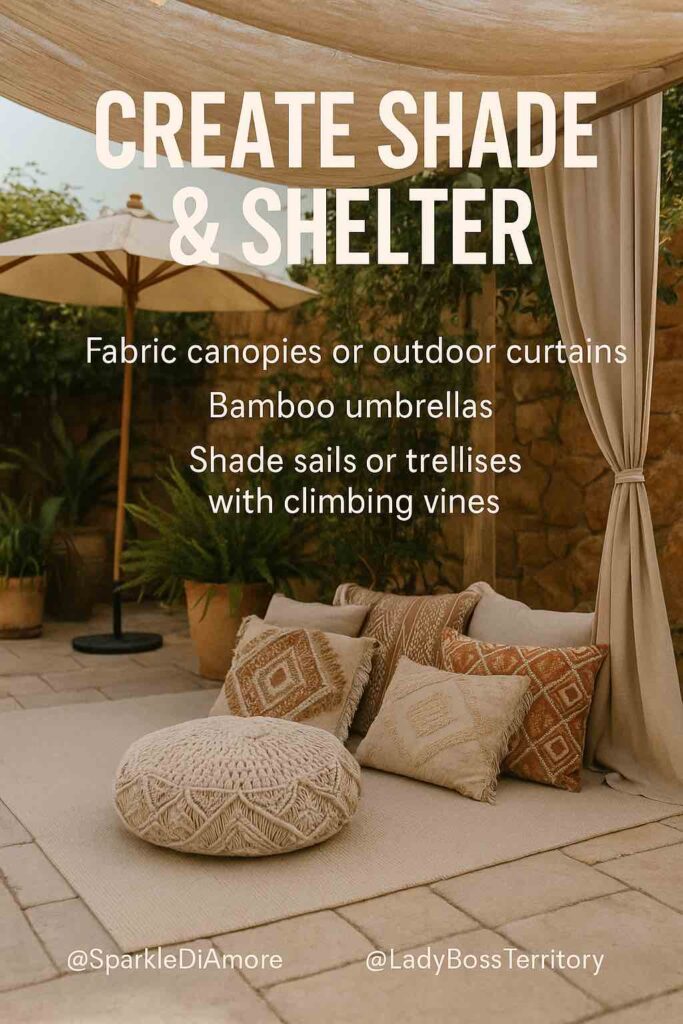
7. Lighting for Mood & Energy
Outdoor spaces shine at dawn and dusk. Use soft, ambient lighting:
- Solar-powered string lights
- LED lanterns
- Flameless candles
- Fairy lights along fencing or trees
The goal is to create warmth, not brightness.
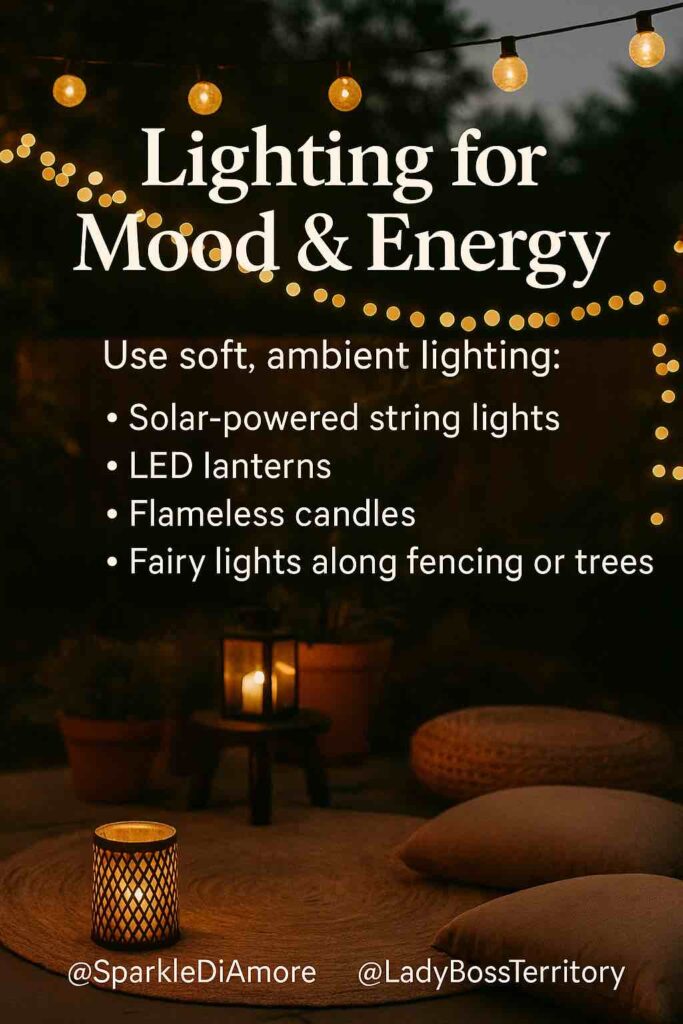
8. Scents that Soothe the Soul
Aromatherapy plays a key role in relaxation. Try:
- Essential oil diffusers (lavender, sandalwood, eucalyptus)
- Incense cones
- Fresh herbs in pots (rosemary, mint, basil)
Scent triggers memory and emotion—use it to train your brain to relax.

9. Sound: Silence or Serenity?
While silence is powerful, natural and ambient sounds can help anchor your practice:
- Wind chimes
- Birdsong
- A gentle playlist or meditation soundtrack on a hidden speaker
Choose whatever enhances focus for you.
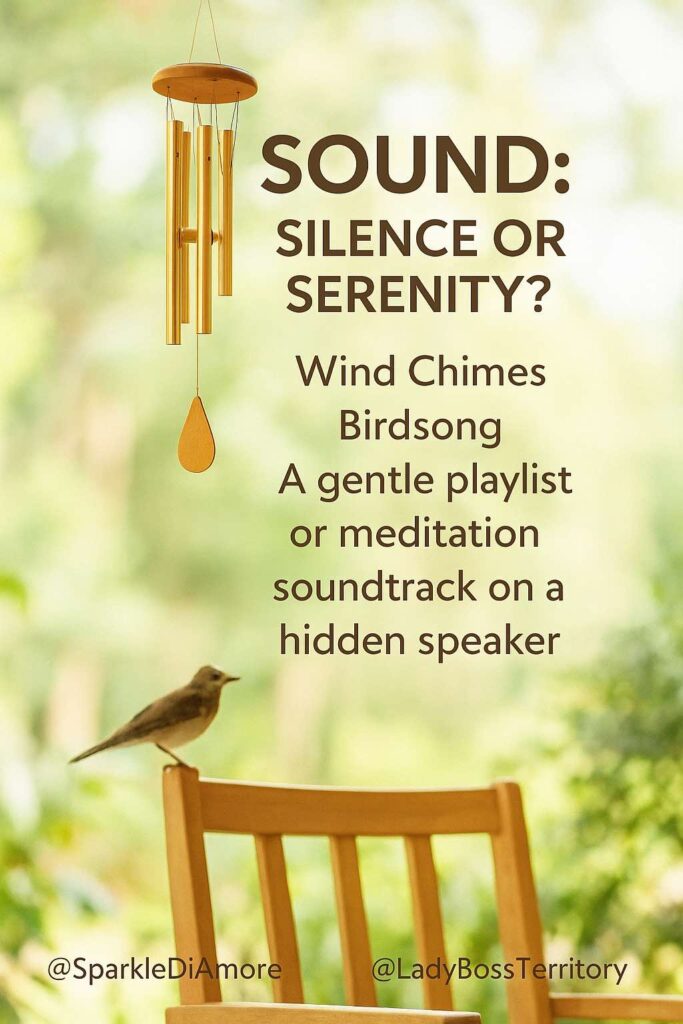
10. Mindful Decor & Sacred Symbols
Your space should reflect your inner self. Think minimalist, intentional decor:
- Buddha statues, crystals, or spiritual tokens
- Art that inspires calm and reflection
- A vision board or affirmation wall tucked into nature
Let it feel sacred—because it is.
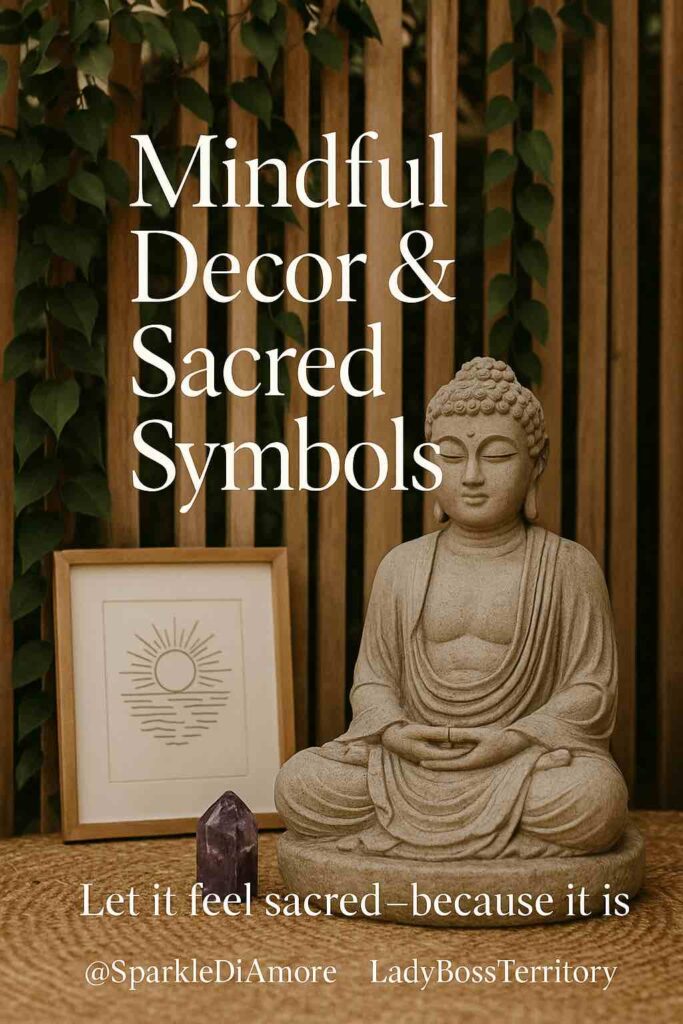
11. Functionality: Yoga, Journaling, Breathwork
Design your space to support multiple practices:
- A basket with journals, pens, or affirmation cards
- A yoga mat corner or rolled-up props
- A breathwork guide or small timer
Adaptability makes it easier to stay consistent.

12. Seasonal Adjustments & Weather-Proofing
Nature changes, and so should your setup:
- Store cushions in waterproof bins
- Use a pop-up canopy in wet seasons
- Add blankets and hot tea for winter mornings
Your sacred space should serve you year-round.
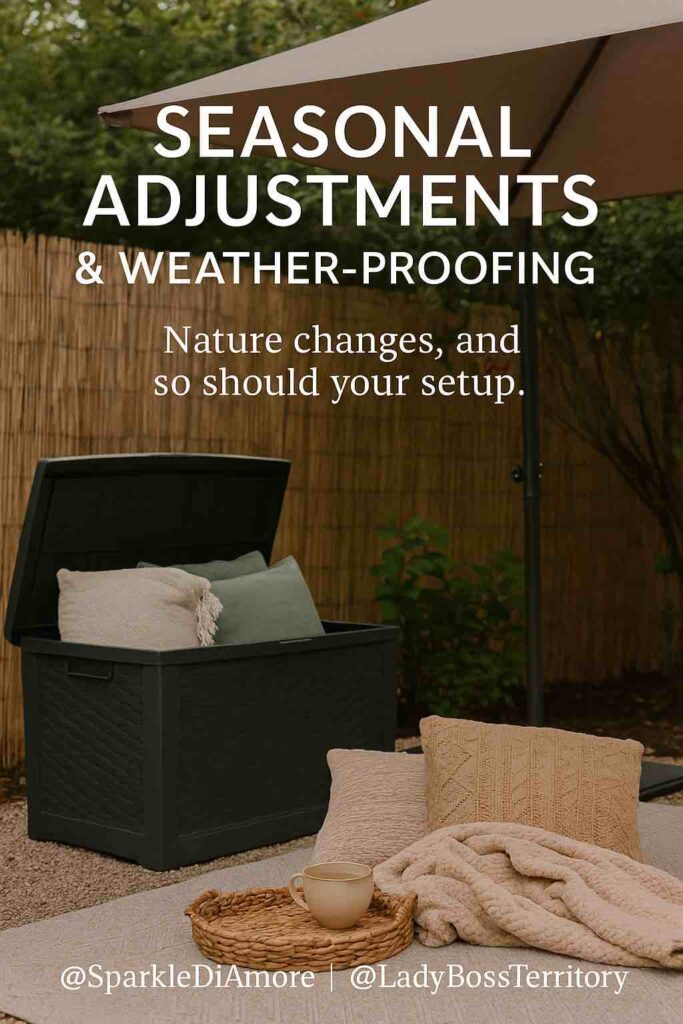
13. Energy Flow & Feng Shui Principles
Even outdoors, energy matters. Arrange seating and decor to:
- Encourage open flow (avoid cluttered corners)
- Face east or natural views
- Use circular or curved patterns to soften harsh lines
Your space should feel light, balanced, and open.
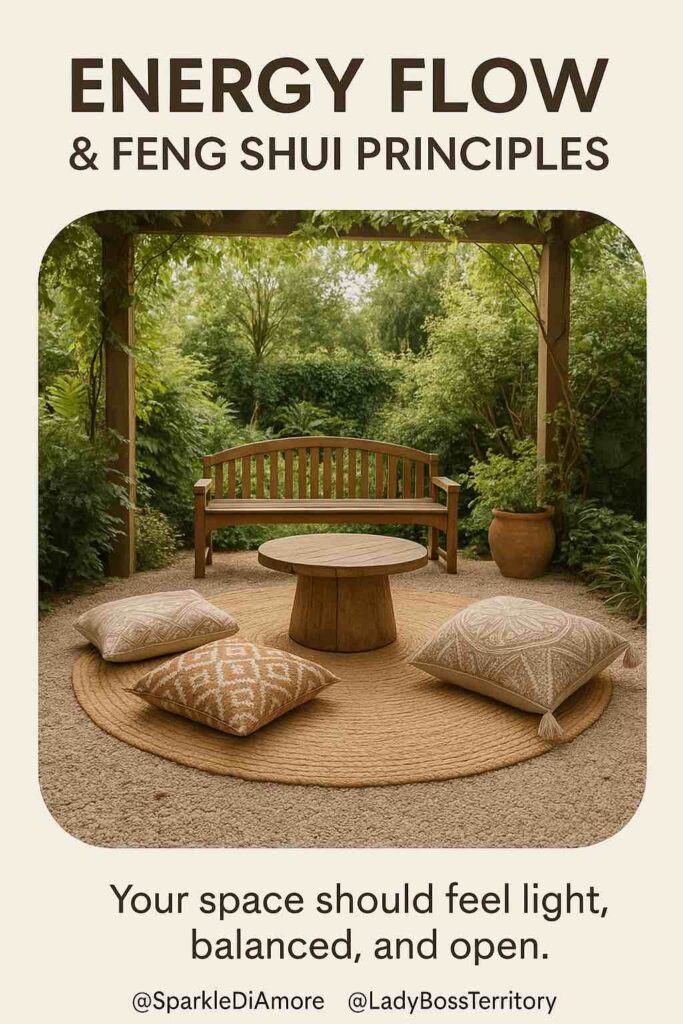
14. Daily Rituals to Anchor Your Mindset
Here are a few ideas to start or end your day:
- Morning meditation as the sun rises
- Breathwork sessions under the stars
- Journaling beside flickering candles
- Sunset gratitude reflections
Consistency compounds peace. A few minutes each day creates lasting change.
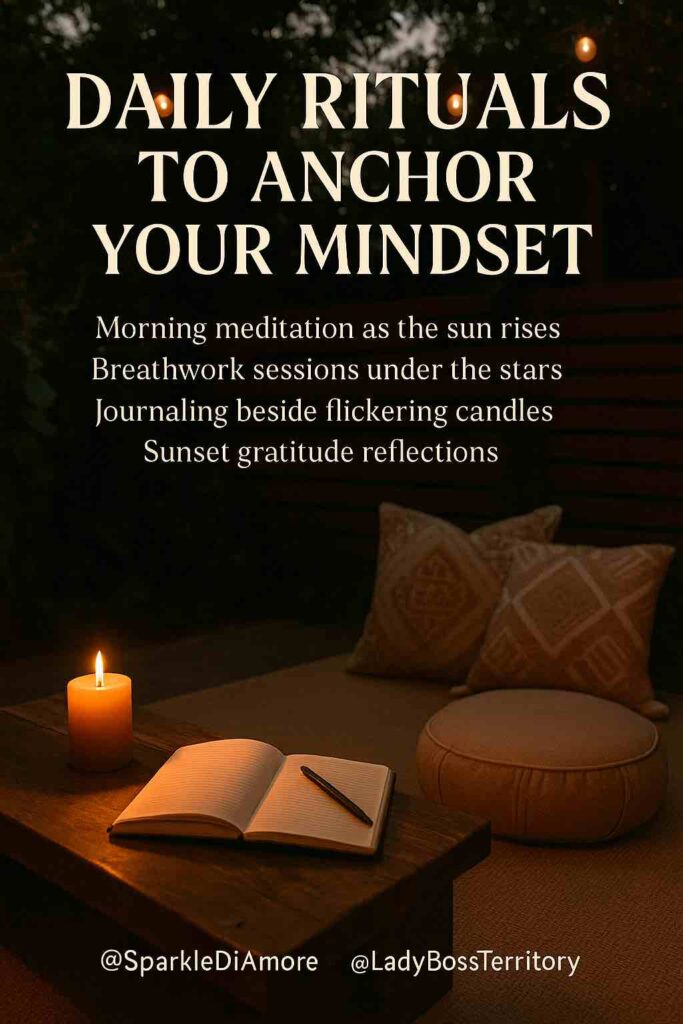
15. Your Mindfulness Toolkit
Have a designated basket or tray for:
- Eye masks, ear plugs
- Meditation beads
- Affirmation or tarot cards
- Aromatherapy oils
- Charging station (if needed)
Keep it minimal, but intentional.
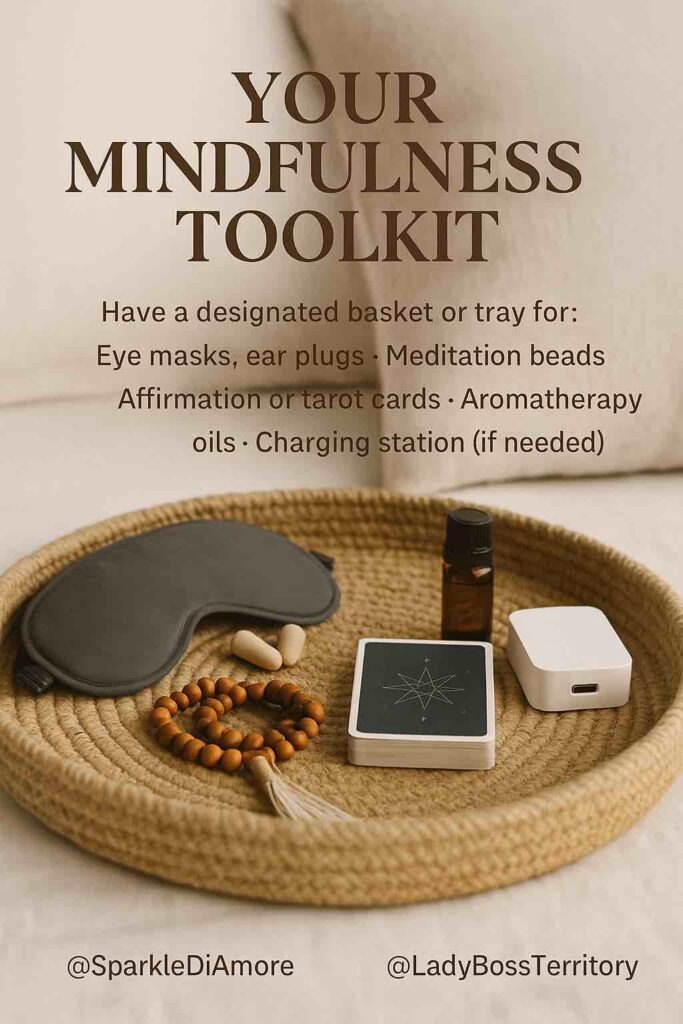
Conclusion: Your Space, Your Sanctuary
You don’t need a luxury spa or a remote cabin to feel peace. What you need is intention, consistency, and a space that reflects your soul’s desire to rest and reset. Creating a serene outdoor meditation space isn’t just a project—it’s a ritual in itself. And in building that space, you declare something powerful:
Your peace matters.
Let this be your invitation to carve out your own sanctuary. Whether it’s five minutes or fifty, the time you spend here will ripple out into every area of your life. You deserve it.
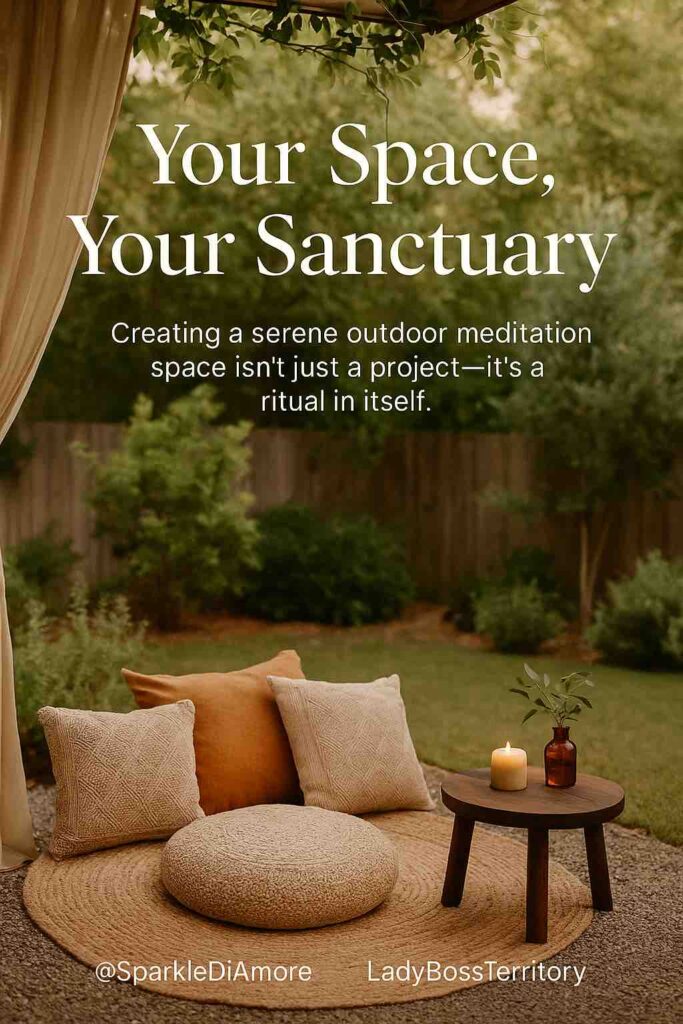


0 comments